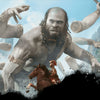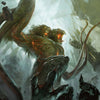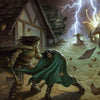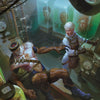10 Underused D&D Monster Hacks for Better Combat
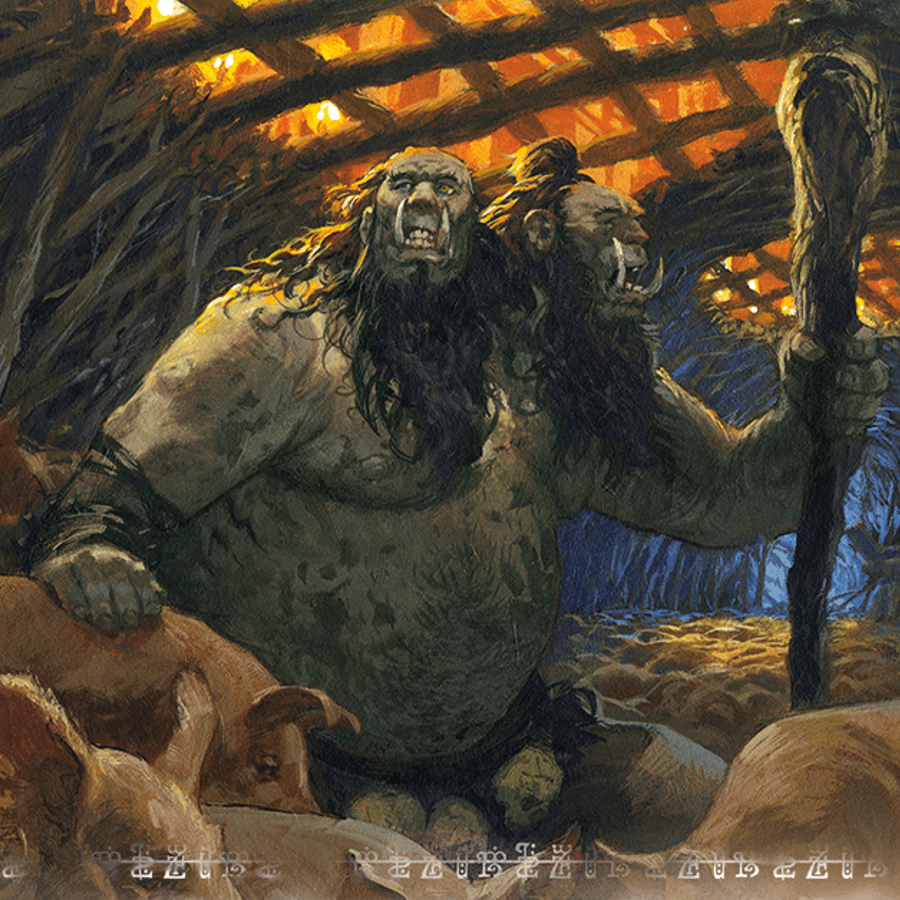
Written by Luke Hart
Boring combat. Uninteresting monsters. We’ve all been there, and it can be miserable, especially for many tabletop roleplaying games, such as D&D and Pathfinder, that feature lots of combat during gameplay. So, today, we’ll go over 10 often overlooked ways game masters can hack their monsters to make combat way more fun and engaging for everyone at the table.
But here’s the thing. As I was thinking about this topic, I realized that uninteresting, lame monsters, such as giants from D&D 5e—big sacks of hit points that just do damage—are only part of the problem. You see, a good game master can take a brute like an ogre and still craft an exhilarating combat with it. So, in addition to discussing changes you can make to monsters, we’ll also hit on several ways you can change your approach to combat in general that will spice things up.
Watch or listen to this article by clicking the video below.
#1 The Power of Narrative Descriptions
This is something I see overlooked all the time in games. The game master says something like, “The kobold moves forward and attacks you. That’s a 24 to hit for 3 points of damage.” And most of the combat proceeds like that. And GMs wonder why their players are bored. Instead, try describing the combat similar to a scene you might see in a movie or read in a book.
Did Aragorn just move forward and hit the orc for 12 damage? No, he strode forward with a snarl on his lips, arms cocked back, sword in hands, and swung for the orc’s neck with all his strength. And then the orc, now headless, toppled to the ground. Trust me, you start sprinkling that sort of thing into your games, and things become much more exciting.
Don’t go overboard, though; a good narrative description is short but powerful and keeps the game moving forward. It doesn’t have to just be the GM, either; when players do this, it acts as a force multiplier and can be a beautiful thing.
#2 Dialogue During Combat
Now, this hack is really overlooked. Who’s to say the monsters must suddenly get tight-lipped once combat breaks out? No, that’s a mistake. Monsters should continue to converse with the characters during combat. Now, these will probably be short sentences spat out between spear thrusts, and they may just be taunts and threats—but that adds another element of engagement to your encounter.
Furthermore, how many times have you had a villain who was going to do some convenient information dropping on the characters before the murderization began, but your players didn’t have the patience, and someone just attacked? Yeah, that happens a lot, right? So, just have your villain continue the conversation during combat. Sure, it will have a different flavor at that point, but if you have important plot-relevant information that needs to be relayed to the characters, this totally works. I do it quite often.
#3 Increase Damage, Reduce Hit Points
OK, now let’s hit on a few things you can do to adjust monsters directly. The first very basic thing is to increase the damage a monster does while dropping its hit points a bit to make it more like a glass cannon. And why, you might ask? Well, think about the standard boring slugfest that often happens in RPGs: it usually involves characters beating on monsters that don’t pose too much threat to them but have either high defenses or high health—the effect of this is dragging the battle out, but without much excitement because the characters are in zero danger.
Now, imagine the reverse: monsters that are very dangerous, deal a lot of damage to the characters, and fast. This creates tension and worry in players because, holy crap, that thing is hitting hard. Now they have to scramble, use their brains, and work their butts off to figure a way out of that scrap. Combat like that is generally far more thrilling because of the drama and tension it creates. When the monsters are defeated, victory seems much more rewarding and fulfilling.
#4 Special Abilities
Exciting monsters do more than just deal damage. Look at the basic wolf. In many RPGs, wolves have a trip built into their basic bite attack. Check out the plague zombie from Pathfinder 2. If it hits a PC, it can also use an action to grab them. Then, on a subsequent turn, the zombie can bite the grabbed PC, and if the bite hits, they are also exposed to its zombie rot affliction.
You see, special abilities like that take a two-dimensional monster—such as a zombie that only thwacks with its fists—and turn it into something more, something truly terrifying. Now, when we’re talking special abilities, you might have some that do damage, but a better path involves abilities that apply conditions—such as grappled, prone, or stunned—or that apply afflictions—poisons, diseases, and curses—such as zombie rot from our example above.
For more ideas, just flip through the bestiaries and find stuff that sounds cool. You can always take an ability from one creature and slap it on another or just use it to inspire your own creativity.
#5 Spellcasting
When you take a monster and give it some spellcasting abilities, you’ve instantly made it twice as interesting. Boring giant? Well, now it casts a meteor swarm variant that causes nearby boulders to fly up into the air and rain down on the party, inflicting injuries, knocking them prone, and creating difficult terrain. Little pansy kobolds are nothing to slaughter and slay—until a couple of them start casting grease on the floor, and the others light it on fire with torches. An iron golem is a standard surround and pound until a baked-in variant of the wall of force spell triggers, creating an invisible labyrinth around it. Now, the key to smoothly implementing spellcasting involves a couple things.
First, plan in advance which spells you want to use, look them up, take notes, and be sure that when you implement them in the game, you don’t bog things down—because running spellcasters can do that if you’re not prepared. I recommend only giving creatures two or three spells—good ones, of course—that way, your options are limited. Limited options will make your life easier, dear game masters.
Next, consider how the spells will fit into the rest of the monsters’ combat plans—the kobolds using the grease spell and torches are a good example.
Finally, if the game system you’re using has a counterspell mechanic—such as that in D&D 5e—you need to consider creative ways to get around it. Use multiple casters; have casters ready the spell from around a corner where they are out of the line of sight and can’t be countered—things like that. And this isn’t metagaming. This is casters not being stupid and planning for the party crasher that is counterspelling. It’s also the game master working to keep their combats more exciting in the face of crappy game mechanics that would otherwise prevent them from doing so.
#6 Use Magic Items
Look, magic items are often on the loot lists for adventures, right? So, have monsters use those magic items! A pansy kobold is more to worry about when it’s pointing a wand at the characters. A word of warning, though, and this should be obvious. . . Anything you give your monsters to use against the characters is something the characters will almost assuredly soon have themselves. So, think twice about giving a kobold a vorpal sword because when that battle is over, it’ll be your player’s fighter holding that vorpal sword at level 2.
For this reason, consumables are your friend—even a powerful consumable can only be used once. Just don’t be a jerk. The monster can have two or three—some it uses itself during combat, but there is always at least one remaining when your players loot the corpse.
#7 Tactics
Have your monsters use actual tactics in combat and not just go toe to toe with the characters for a slugfest. Even a boring monster like a giant can become interesting when you do this. Instead of just swinging its club or throwing a rock, it pushes a character to the ground first and then whacks him. Then, another giant puts its foot on the character, pinning him solidly in place for more whacking.
Or, two giants throw a third giant—the big fat one, of course—up over the front line of fighters so that Fattie can threaten the archers and spell casters. Another giant might push over a column that drops a mound of debris into the middle of the battlefield, separating the characters from each other.
Play your spell casters cagey, having them dart around corners and take cover so they can’t easily be targeted. Threaten the squishy characters, especially anyone who reveals themselves as spell casters—monsters know that spells mean trouble; best squish the caster quickly. Split the party and use special abilities to good effect. These are all just examples. When I design adventures and prep prior to my games, I consider the tactics the monsters will use.
#8 Plan the Setup
Fun combat often begins with an interesting setup, which can mean many different things. It might be as simple as an orc who blows a horn that calls in two more groups of orcs that flank the characters. It could be a battle that takes place on a network of crumbling stone walkways with a lake of boiling blood below—and then flying monsters that intentionally try to shove characters off the walkways and to their dooms. How you implement the setup of the combat will vary drastically.
There are practically infinite ways to do it. However, the point is to get away from just tossing monsters in a room and then having them attack. An encounter with a creative setup is far more likely to be a hit at the table than one without.
#9 Vary the Goal
The characters’ goal in an encounter doesn’t have to be to just kill the monsters. If that’s the only goal your players ever have, no wonder they’re bored. Instead, determine the characters’ and the monsters’ objectives for any given encounter. The characters want to free the farmers’ missing goats from the kobold lair; however, the kobolds on guard duty want to stop them.
Here, the characters don’t really care if the kobolds live or die; they just want the goats. The evil cultists are in the middle of a ritual to sacrifice the queen’s sister and destroy the entire royal bloodline. The cultists want to finish the ritual; the characters want to stop them. That might mean just killing the cultists, or it might mean grabbing the sacrificial dagger, or it might mean stealing away the queen’s sister. Interesting objectives are the seeds for interesting encounters.
#10 Throw a Curve Ball
When you can see your players settling into a rhythm, switch things up. The cultists are nearly defeated, and the last few remain, but then the head cultist throws back his hood to reveal his true nature: a demon spawn, equally cruel and powerful. The final giant drops to the ground dead, but then it begins twitching. Moments later, several trolls rip their way out from within—former meals now able to escape their consumers.
Do You Sometimes Feel Overwhelmed as the DM?
When I was a new dungeon master, I was overwhelmed with everything I needed to do. Learn the rules, create the adventures, run the game, handle problem players—it was A LOT! And even as a veteran DM, it’s still a lot. You might even feel that way yourself.
If you’re looking for loads of 5e adventures that you can prep in under 30 minutes, or elements such as traps, puzzles, and encounters that you can drag and drop into your game at moment’s notice, we have you covered!
With Lairs & Legends and Loot & Lore, you’ll get over 700 pages of 5e resources:
- Twenty-nine 5e adventures spanning levels 1 to 15 and designed for groups of 4 to 6 players.
- Over 100 new creatures from CR 0 to CR 24.
- Adventure Ideas
- Encounters with Full-Color and Blackline Digital Maps
- Patrons & Factions
- Magic Items
- NPCs
- Puzzles
- Random Encounter Tables
- Random Tables
- Spells
- Subclasses
- Traps
- Villains
Everything is designed to be EASY TO USE and QUICK TO PREP for your game. Our goal is to make game masters’ lives easier, not more complex!
Don’t spend another moment frustrated and overwhelmed as a DM. Pick up the Lairs & Legends Ultimate Bundle today and find out how much easier being a DM can be!
-
Posted in
Game Master How-To Articles




